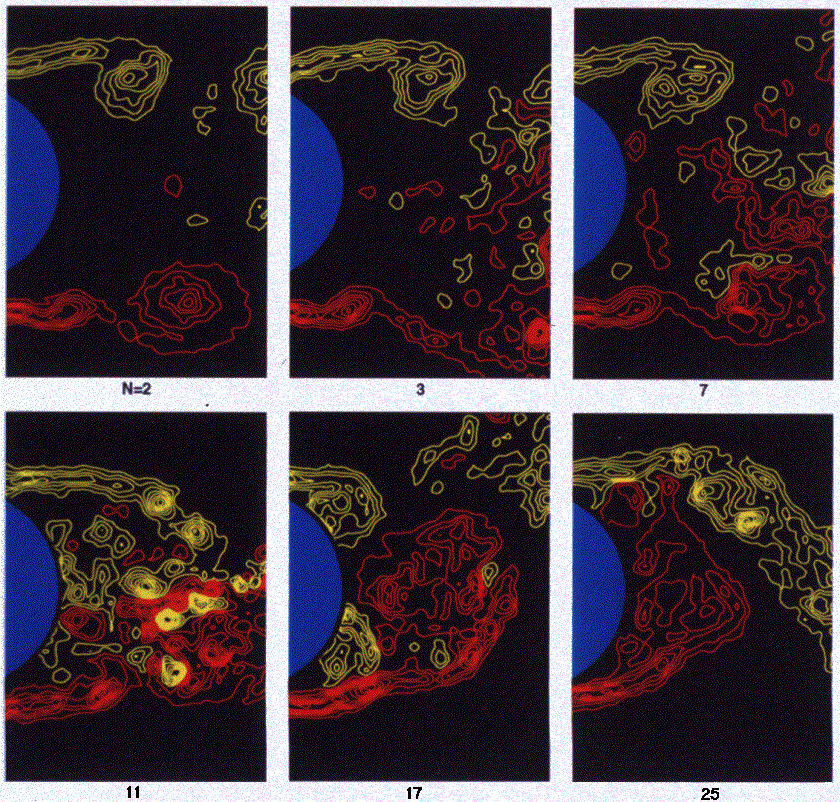You are here
Home ›Transient response of near-wake to onset of cylinder perturbations.
Transient response of near-wake to onset of cylinder perturbations. Abrupt onset of the cylinder perturbation at a frequency one-half the Kelvin-Helmholtz frequency of the separation shear layers, and an amplitude 0.04D, where D is cylinder diameter, generates the response shown in the successive images N = 2 through 25. N represents the cycle of the subharmonic perturbation measured from its onset. Initially, the wake exhibits the response of a system of coupled mixing layers; alternating vortex coalescence occurs in the bottom layer and consistent coalescence in the upper layer. At successively larger values of N, vorticity-bearing fluid is drawn upstream along the central region of the wake towards the base until, at N = 11, a limiting state is attained, whereby vorticity concentrations in the separting shear-layers are returned along the plane of symmetry toward the base of the cylinder. Then at N = 17, large-scale Karman vortex formation from the bottom surface of the cylinder induces shedding of a vortex of oppposite sense from the base. Eventually, at N = 25, Karman vortices are formed very close to and extending across the entire base of the cylinder. Re= 5,000. [1]

